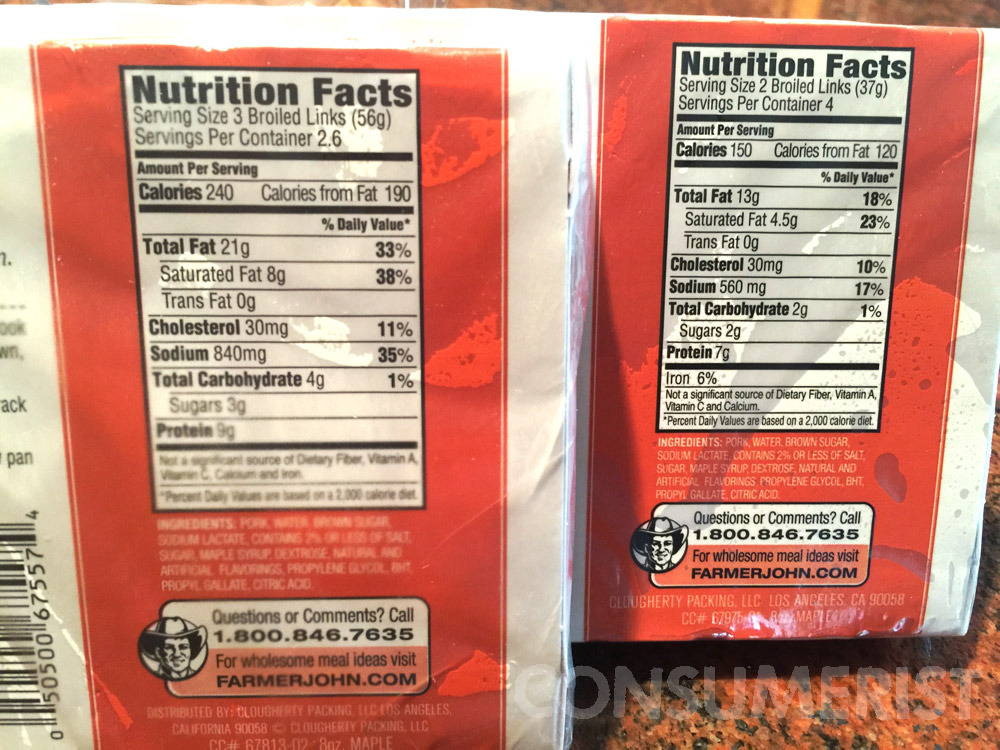Why Does Farmer John Sell The Same Sausages With Different Recipes At Regular And Discount Grocery Stores?
You can’t blame Charles for thinking that the products that he bought at two different grocery stores were the same thing. They’re both Farmer John maple sausages. Both packages contain 8 sausages, and weigh 8 ounces uncooked. Yet they have slightly different nutritional profiles. He thinks this is because one comes from a discount grocery store. Is that the case?
Here’s the front of the packages of each sausage, since he happened to have both on hand. The fresh product comes from SaveMart, which is a standard grocery store. The frozen package comes from Food4Less, a Kroger-affiliated discount grocery chain.

Here’s the nutritional information, which differs slightly between the sausage types.

“Farmer John is basically producing two different packages of sausage,” Charles writes, “and the one they sell at Food4Less has higher calories, higher carbs and more fat than the sausages sold in the SaveMart purchased package.” He points out that it’s more difficult to make an immediate comparison between the packages, because one has a serving size of two sausages and the other has a serving size of three. You can’t compare the two at a glance if you happen to shop at both stores: you’d need to do the arduous math of dividing by two or three.
Charles called up Farmer John, who is a Hormel brand and not a kindly neighborhood hog farmer. A customer service representative explained to him that if the two products have different bar codes, that means they’re separate products, even if they appear to be the same sausage. Yet Charles didn’t find this answer acceptable: why did the discount grocer’s sausage have a slightly worse nutritional profile?
We contacted Hormel to try to find out more, and they told us pretty much the same thing as Charles: never mind the standard/discount grocery store divide; these are different products.
A Hormel representative explained:
These products are two unique recipe formulations with different attributes, however the flavor profile is the same. Freezing meat products at below 10 degrees Fahrenheit, helps reduce the rate of spoilage or bacteria outgrowth. As such, this is the reason frozen items have a longer shelf life.
Yet the product with a longer shelf life isn’t the one that’s at the discount grocery: those were the fresh sausages. Maybe the discount version simply has slightly worse cuts of meat and slightly more carb-laden fillers, which leads to the slightly different nutritional profile and, of course, lower price. That’s what Hormel seems to imply here without saying, “Yep, those are the cheap sausages.”
Want more consumer news? Visit our parent organization, Consumer Reports, for the latest on scams, recalls, and other consumer issues.

